- VMware
- 31 July 2020 at 11:45 UTC
-

- 1/2
Most of the time, virtualization allows you to :
- resolve compatibility issues (for example : a program that was running on Windows XP, but no longer works with Windows 8)
- test new operating systems
- test new IT solutions
- and more
Nevertheless, it can happen that it doesn't work in virtual. This is particularly the case with the "Microsoft Hyper-V" virtualization server.
If you want to virtualize "Microsoft Hyper-V" (on Windows Server 2012 R2), you will need to use the nested virtualization.
For this to work with VMware Workstation, you must use VMware Workstation 11.
Indeed, recent versions of VMware Workstation no longer support nested virtualization.
Update 2020 : VMware Workstation 16 again lets you virtualize Hyper-V smoothly, as was the case with VMware Workstation 11.
Note that the modification mentioned in our tutorial regarding the modification of the ".vmx" file of the created virtual machine is still required for Hyper-V to be installed in the VMware virtual machine.
1. Known issues
When you virtualize Windows Server 2012 R2 with VMware Workstation and attempt to install the Hyper-V role, you receive the following error message :
Hyper-V cannot be installed: A hypervisor is already running.
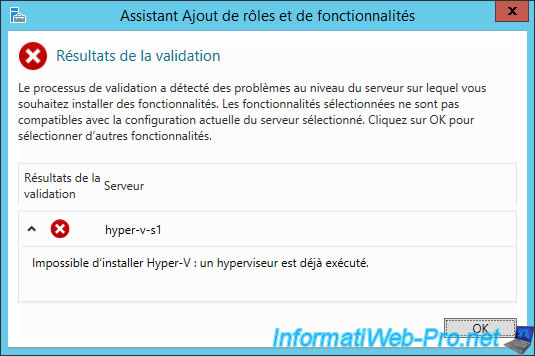
If you try to use nested virtualization with a recent version of VMware Workstation (except since version 16), the wizard will let you install the role, but during the restart, Windows Server 2012 R2 will freeze and finally produce a "DPC_WATCHDOG_VIOLATION" blue screen.

Hence the need to use version 11.0.0 or at least version 16.0 and NOT another version of VMware Workstation.
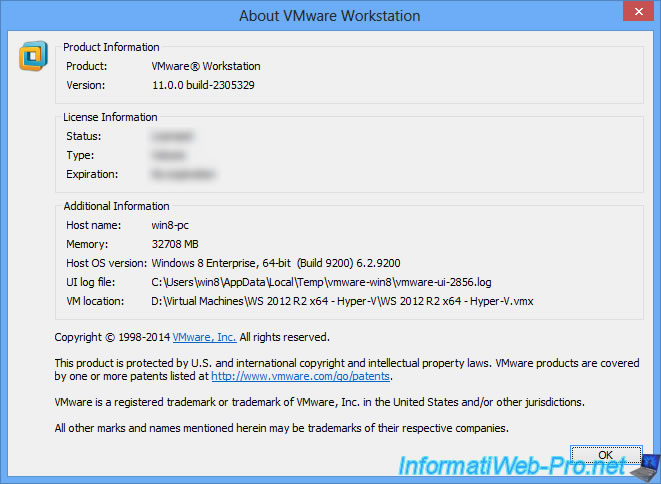
2. Configuration used
For this tutorial, we used :
- version 11.0.0 of VMware Workstation
- Windows Server 2012 R2 in the virtual machine
Update 2020 : tutorial also tested without problem with version 16 of VMware Workstation and the same version of Windows Server.
3. Create the virtual machine
To get started, start the New Virtual Machine Wizard.
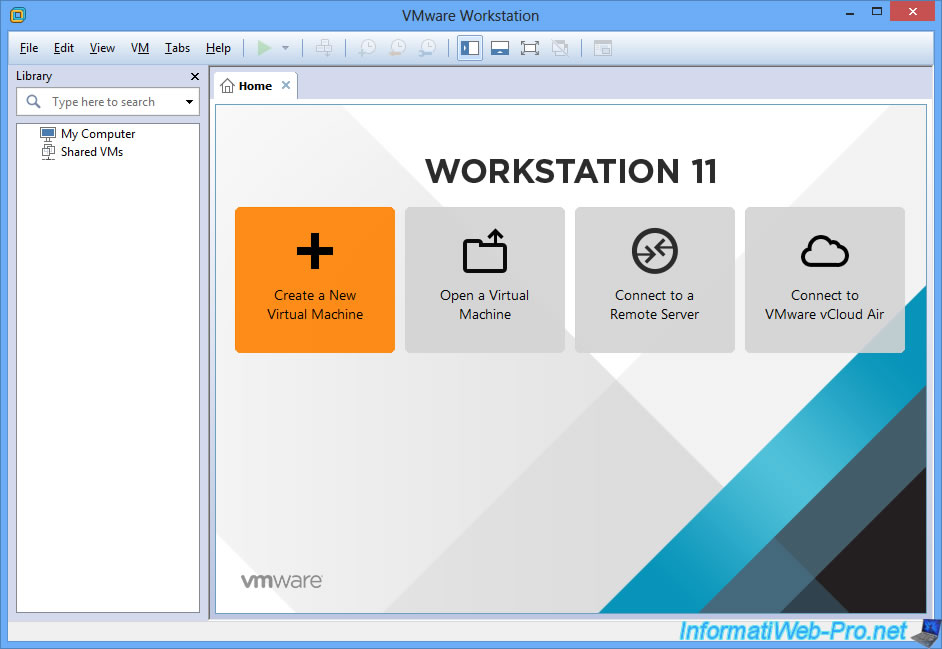
Choose "Custom (advanced)" and click Next.
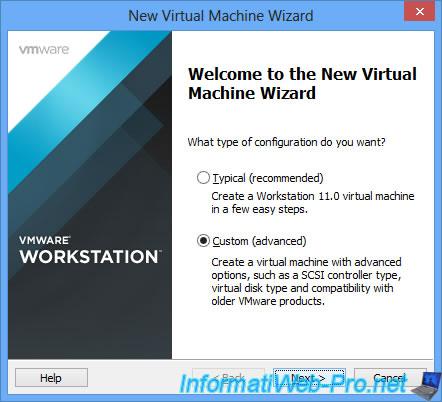
Leave the compatibility on "Workstation 11.0" if you are using version 11 of VMware Workstation.
If you are using version 16 of VMware Workstation, leave the compatibility on "Workstation 16.0".
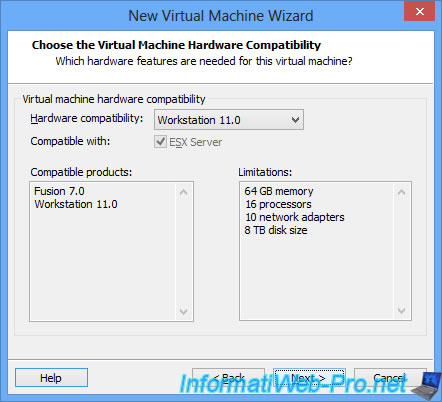
Choose "I will install the operating system later".
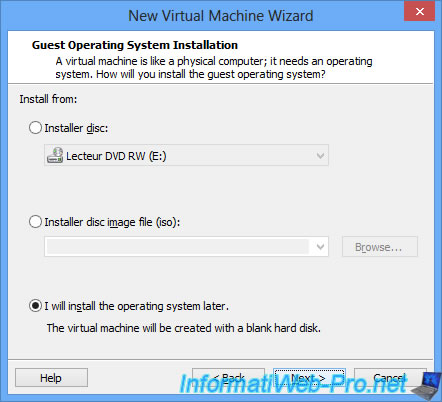
Choose these options :
- Guest operating system : Microsoft Windows
- Version : Windows Server 2012 (even if you want to install the 2012 R2 version)
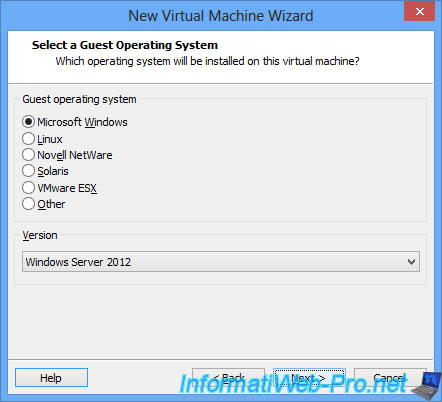
Provide a name for your virtual machine.
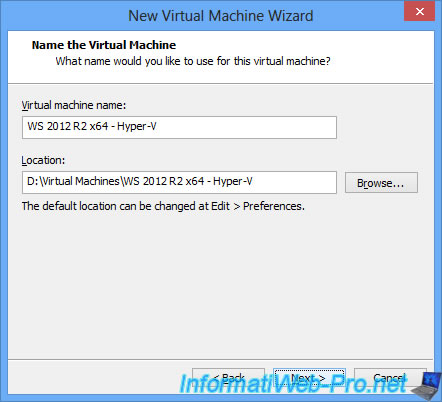
Leave the default option for the firmware type.
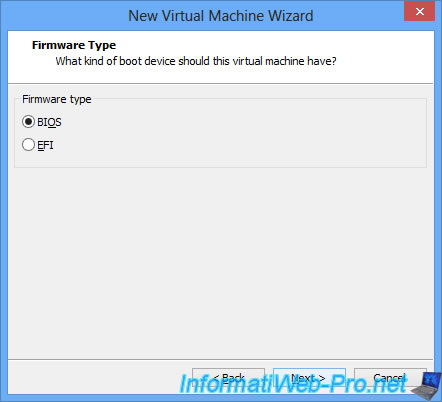
For best performance, assign at least 2 cores to this virtual machine.
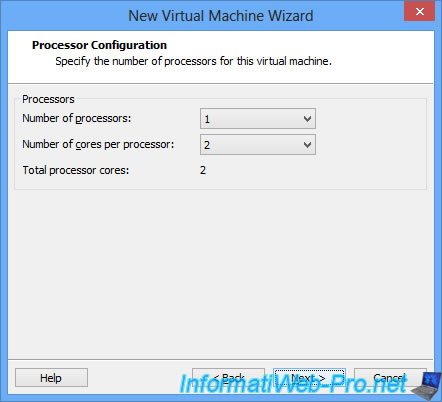
In order to run VMs in your Hyper-V virtualized server, you will need to allocate several GB of memory to it.
In our case, we allocated 8 GB (8192 MB) to our VMware VM.
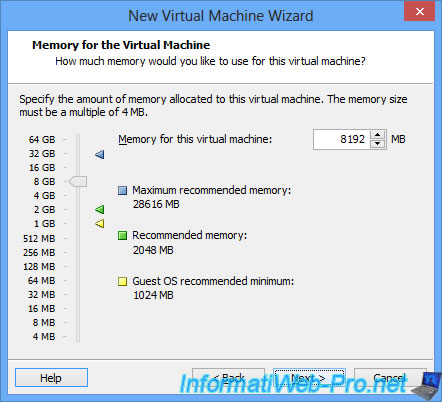
Provide enough space to store your future virtual machines.
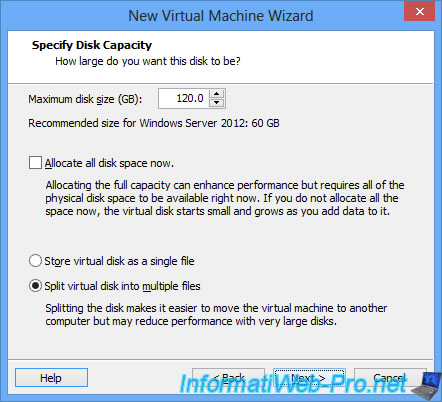
At the end of the wizard, click on "Customize Hardware".
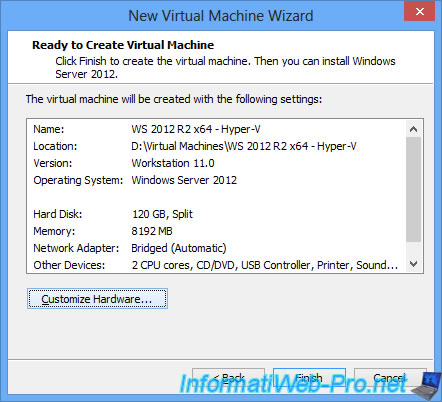
Share this tutorial
To see also
-
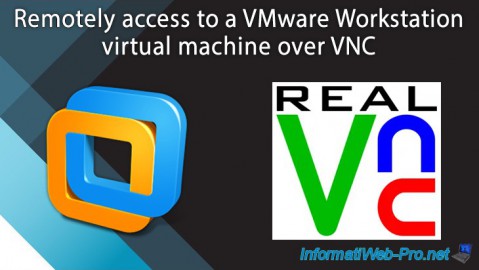
VMware 2/24/2016
VMware Workstation - Remotely access to a VM over VNC
-
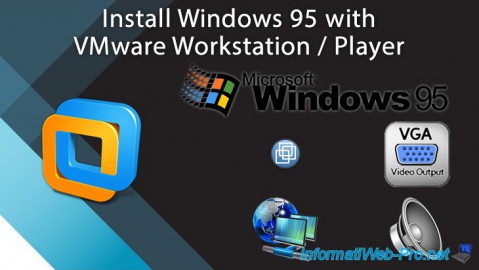
VMware 3/25/2013
VMware Workstation / Player - Install Windows 95
-
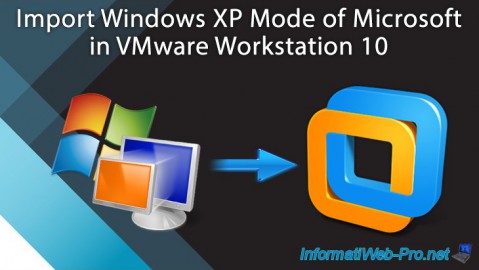
VMware 1/31/2020
VMware Workstation 10 - Import Windows XP Mode of Microsoft
-
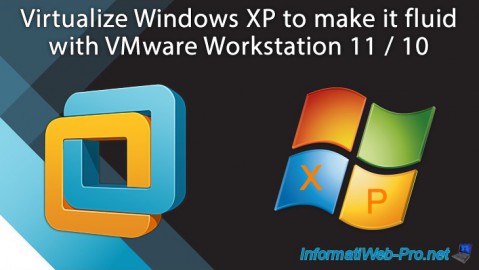
VMware 1/31/2020
VMware Workstation 11 / 10 - Virtualize Windows XP to make it fluid

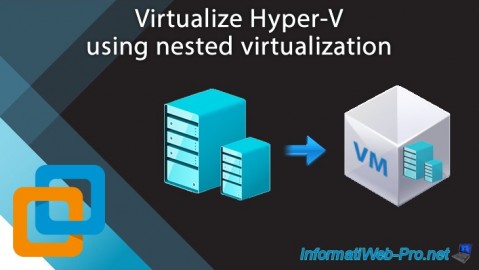
You must be logged in to post a comment